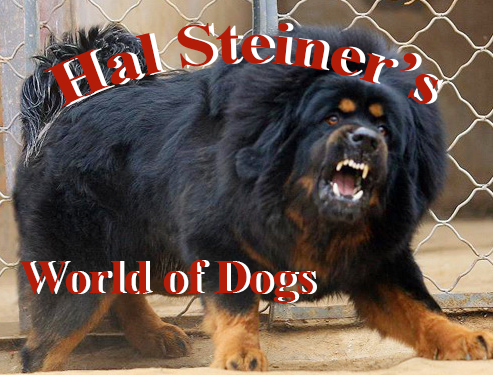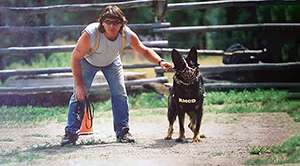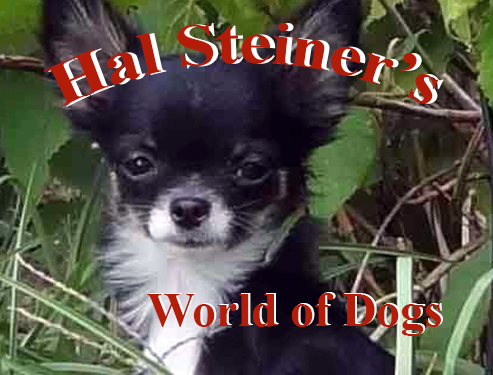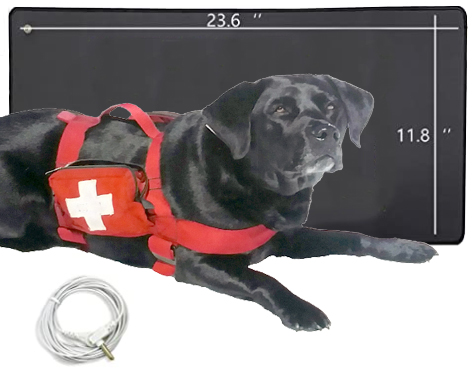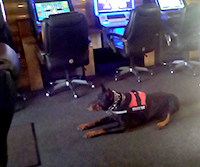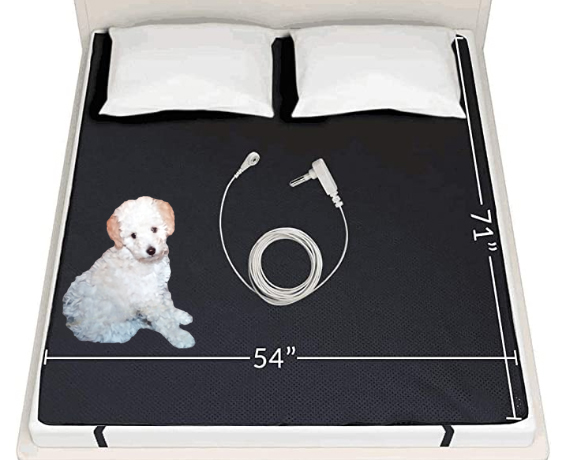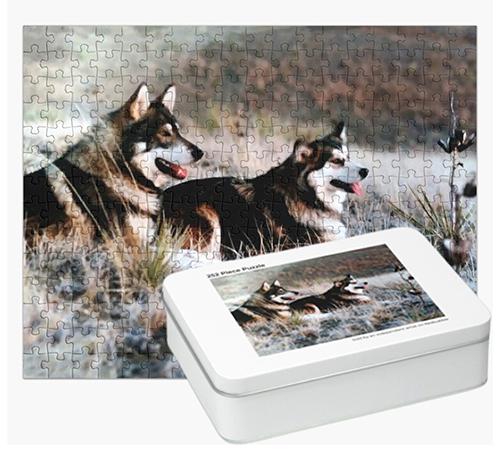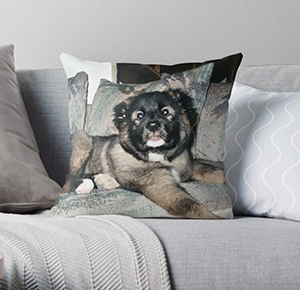First knapweed location dog in history and the first to locate a plant within a plant based community.
Nightmare has a 93 percent success rate overall in locating the invading non-native spotted knapweed. She followed it up with 98% in the final trials in open fields, demonstrating that dogs can effectively detect low densities of invasive plants.
Knapweed Nightmare was the first dog trained to locate low densities of invasive non-native noxious weeds. Nightmare is a sable shepherd dog trained by Montana based, Rocky Mountain Command Dogs.
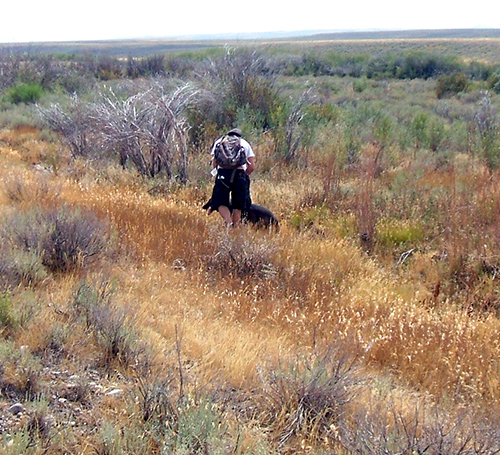
Knapweed Nightmare with Charles Whelan, second handler, Assistant Trainer RMCD
Kim Goodwin, a weed prevention coordinator at Montana State University Bozeman, came up with the idea that detection dogs may be trained to sniff out invasive non-native weeds in the same way they can be trained to find drugs and bombs.
Goodwin approached a nearby dog trainer with her plan to use canines to find Spotted Knapweed, and the two got to work on the project. The shepherd dog Nightmare, who is being trained to find scents, was picked to find the invasive plant..
Hal Steiner, her trainer, mostly employs positive dog training techniques for scent work training. Game theory is a technique used to motivate the dog to look for the knapweed without using food rewards. The dog is focused on a specific item, such as a towel or a length of plastic tubing that is wrapped with knapweed. Handlers reward the dog when she reacts to the scented toy. The toy is then hid in spots that are getting harder to find.
The knapweed detection dog was trained slightly differently from other scent-detecting dogs; by spending at least 10 seconds digging at a knapweed rosette, the GPS attached to her collar can pinpoint the location of a knapweed find..
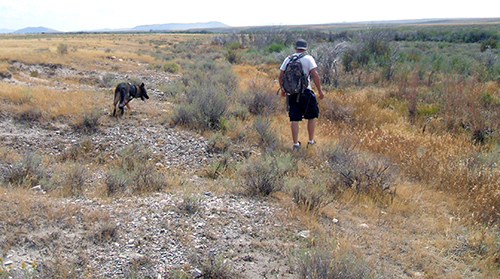
Knapweed Nightmare in the field with Charles Whelan
Since Nightmare was expected to work on her own out in a large pasture locating small rosettes of knapweed as it invaded an area, she needed to be able to cover the field without chasing after wildlife or stray scents. As her proficiency increased, the trainers added various distractions, to help Nightmare learn to stay focused solely on her task.
Overall, Nightmare has a 93 percent success rate in finding the invasive non-native spotted knapweed Centaurea stoebe. With a follow up at 98% in the last test in open rangeland, she has shown that canines can efficiently detect low densities of invasive plants..
References
"A Nose For Knapweed". Bozeman Daily Chronicle. 2010. Retrieved 1 December 2003.
"Using Canines to Detect Spotted Knapweed: Field Surveys & Characterization of Plant Volatiles". Goodwin, Kim Marie. 2010. Retrieved 30 August 2010."Your Dog's Ability To Track Scents". Whole Dog Journal. 2005. Retrieved 10 January 2005.
"Trained Dogs Outperform Human Surveyors in the Detection of Rare Spotted Knapweed". Goodwin, Kim Marie. 2010. Retrieved 20 April 2010.

